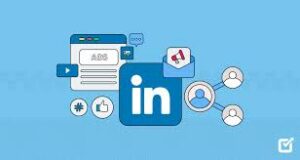What Are LinkedIn Hashtags in 2025
LinkedIn Hashtags in 2025 are words or phrases preceded by the “#” symbol, used to categorize content and increase discoverability on the platform.
They help users connect with relevant topics, industries, and trends by associating posts with specific themes.
For example, if you add #ArtificialIntelligence to a post about AI advancements, your content will be visible to anyone following or searching for that hashtag.
Additionally, these hashtags allow businesses and professionals to enhance their outreach and contribute to ongoing industry conversations.
Unlike Instagram or Twitter, where hashtags often serve to increase visibility broadly, are more focused on professional networking, industry discussions, and content organization.
They help users identify and engage with thought leadership, company news, and industry trends, making them an essential tool for professionals aiming to stay relevant and informed
Additionally, LinkedIn’s algorithm considers hashtag usage when ranking content, meaning strategically chosen hashtags can improve post visibility, engagement, and interaction rates with your target audience.
Table of Contents
Why Use LinkedIn Hashtags in 2025?
![How to Use LinkedIn Hashtags in 2025 [+ FREE TOOL] 1 Content Blog Banner Q1 2024 1125x600 096 LinkedIn Hashtags.png](https://technaseer.com/wp-content/uploads/2025/02/Content-Blog-Banner_Q1-2024_1125x600_096_-LinkedIn-Hashtags.png.png)
LinkedIn Hashtags in 2025 serve multiple purposes beyond just making content more discoverable.
They act as a bridge connecting professionals with relevant topics, conversations, and industry trends, ensuring that the right audience sees your content.
Unlike generic social media platforms, LinkedIn’s professional environment means hashtags carry more weight in networking, thought leadership, and business growth.
They help categorize your content, making it easier for users to find posts aligned with their interests and industry expertise.
By strategically using hashtags, you can improve the reach of your posts and ensure they appear in searches performed by industry peers, recruiters, and potential business partners.
Furthermore, hashtags allow for better content organization, helping LinkedIn’s algorithm surface your posts to a relevant audience, thereby increasing engagement and credibility.
Here are some key reasons why you should be using them:
1. Increase Content Reach and Visibility
![How to Use LinkedIn Hashtags in 2025 [+ FREE TOOL] 2 LinkedIn Hashtags in 2025](https://technaseer.com/wp-content/uploads/2025/02/image-2.png)
Adding relevant hashtags ensures that your posts appear in searches and feeds of users who follow or engage with those LinkedIn Hashtags in 2025.
This expands your post’s reach beyond your immediate network and introduces your content to a broader professional audience.
By using industry-specific and trending hashtags, your posts have a higher chance of being discovered by like-minded professionals, recruiters, and potential clients.
Furthermore, leveraging hashtags helps categorize your content, making it easier for LinkedIn’s algorithm to suggest your posts to users interested in similar topics.
This process enhances engagement rates, boosts profile visibility, and fosters networking opportunities.
The more relevant and targeted your hashtags are, the more likely your content is to gain traction, sparking conversations and increasing interactions on your posts.
2. Enhance Engagement and Networking
![How to Use LinkedIn Hashtags in 2025 [+ FREE TOOL] 3 LinkedIn Hashtags in 2025](https://technaseer.com/wp-content/uploads/2025/02/image-3-1024x683.png)
Using the right hashtags can significantly increase interactions with your content by expanding its visibility beyond your immediate network.
When your post appears in hashtag feeds, industry professionals who are not in your direct connections can discover and engage with your posts.
This creates opportunities for meaningful discussions, professional networking, and potential collaborations.
Additionally, posts with relevant hashtags are more likely to receive comments, likes, and shares from individuals who are genuinely interested in the topic, which further boosts your content’s reach and engagement.
Hashtags also encourage organic conversations, allowing you to connect with thought leaders and professionals who can offer insights, advice, and new perspectives.
Engaging with those who interact with your hashtagged posts can lead to long-term professional relationships and increase your influence within your industry.
3. Position Yourself as an Industry Thought Leader
![How to Use LinkedIn Hashtags in 2025 [+ FREE TOOL] 4 LinkedIn Hashtags in 2025](https://technaseer.com/wp-content/uploads/2025/02/image-4.png)
By consistently using industry-specific hashtags, you can establish yourself as a knowledgeable professional in your field.
When you regularly contribute insightful content under relevant hashtags, other professionals, recruiters, and industry leaders begin to recognize your name and expertise.
Engaging with trending hashtags allows you to participate in relevant discussions, showcase your knowledge, and position yourself as a thought leader.
Additionally, hashtags enable you to reach audiences who are specifically interested in your niche, ensuring that your content resonates with the right people.
Consistently interacting with posts under popular industry hashtags can also boost your visibility, helping you to build credibility, grow your network, and even attract collaboration or speaking opportunities.
By thoughtfully selecting and engaging with the right hashtags, you demonstrate your authority in the field, stay top-of-mind for potential partners, and create a lasting impact in your professional community.
4. Improve LinkedIn SEO
![How to Use LinkedIn Hashtags in 2025 [+ FREE TOOL] 5 LinkedIn Hashtags in 2025](https://technaseer.com/wp-content/uploads/2025/02/image-5-1024x536.png)
Hashtags help LinkedIn categorize your content, making it more likely to appear in searches and recommended feeds.
Users searching for content related to specific industries, trends, or skills are more likely to find your posts if they contain the right hashtags.
By strategically selecting relevant hashtags, you increase the chances of your content being surfaced to the right audience at the right time.
This enhances content discoverability and ensures that your posts contribute to ongoing professional conversations within your field.
Moreover, LinkedIn’s algorithm takes hashtag usage into account when ranking posts in search results.
Using a mix of trending and niche-specific hashtags can improve your post’s ranking, making it visible to a wider audience.
Additionally, well-chosen hashtags can help reinforce your expertise in a specific domain, positioning you as a go-to resource for industry insights and discussions.
By consistently using relevant hashtags, you create a content trail that helps establish your brand identity and credibility over time.
5. Follow Industry Trends and Competitor Activity
![How to Use LinkedIn Hashtags in 2025 [+ FREE TOOL] 6 LinkedIn Hashtags in 2025](https://technaseer.com/wp-content/uploads/2025/02/image-6-1024x683.png)
Following relevant hashtags allows you to keep track of industry trends, competitor strategies, and professional conversations, helping you stay updated and informed.
By monitoring these hashtags, you gain insights into the latest developments, emerging innovations, and key discussions happening within your field.
This can provide you with a competitive edge, allowing you to anticipate industry shifts, adapt to new best practices, and engage in meaningful dialogues with thought leaders and peers.
Additionally, following industry-specific hashtags can help you identify key influencers, discover new business opportunities, and stay ahead of the competition.
By engaging with trending content under relevant hashtags, you can build credibility, establish connections, and even attract potential clients or job opportunities.
Regularly tracking hashtags ensures that you remain well-informed about important market changes, helping you make strategic decisions that align with industry advancements.
15 Top LinkedIn Hashtags in 2024
To maximize your post’s reach and engagement, consider using popular LinkedIn hashtags.
Here are 15 of the top-performing hashtags in 2024:
- #Leadership – Covers leadership insights, management strategies, and career growth tips.
. - #Technology – Focuses on emerging tech trends, innovations, and developments.
. - #Marketing – Includes digital marketing, content strategies, and branding discussions.
. - #AI – Addresses artificial intelligence, machine learning, and automation trends.
. - #Innovation – Discusses new ideas, inventions, and creative problem-solving.
. - #FutureOfWork – Explores remote work, hybrid models, and workplace transformations.
. - #Entrepreneurship – Covers startups, business growth, and entrepreneurial mindset.
. - #PersonalBranding – Focuses on building online presence and authority.
. - #BusinessGrowth – Discusses strategies for scaling businesses and increasing revenue.
. - #Sustainability – Highlights eco-friendly business practices and corporate responsibility.
. - #JobSearch – Assists job seekers with career advice and opportunities.
. - #CareerDevelopment – Covers upskilling, mentorship, and career growth.
. - #DigitalTransformation – Explores how businesses are leveraging digital tools and strategies.
. - #Finance – Discusses financial planning, investments, and industry news.
. - #Networking – Focuses on professional connections, events, and relationship-building.
.
Using a mix of trending and niche hashtags related to your industry can help tailor your reach and engagement.
How to Find and Create Hashtags for LinkedIn
1. Use LinkedIn’s Search Bar
Type a keyword related to your industry in LinkedIn’s search bar and explore the suggested hashtags.
As you type, LinkedIn will generate a list of related hashtags, showing you potential options to include in your content.
Click on a hashtag to see how many people follow it and analyze the type of content being shared.
Take note of how frequently the hashtag is used and the engagement levels on posts that include it.
Additionally, explore different variations of your keyword to uncover niche hashtags that might be less competitive but still highly relevant.
For instance, instead of just searching for #Marketing, try #ContentMarketing or #DigitalMarketing to target a more specific audience.
This approach helps you refine your hashtag strategy and ensures you use the most effective tags for your industry.
Engaging with posts under these hashtags can also give you insights into trending topics, allowing you to tailor your content accordingly.
2. Check Competitor and Influencer Posts
Look at industry leaders, influencers, and competitors to see which hashtags they frequently use.
This can help you discover popular and relevant hashtags in your niche.
Analyzing their posts allows you to understand which hashtags drive engagement and reach a broad audience.
Take note of recurring hashtags in high-performing posts, as these are likely effective in increasing visibility.
Additionally, observe how they use a mix of broad and niche hashtags to target different segments of their audience.
Industry leaders often experiment with emerging hashtags, giving you insights into new trends before they become widely adopted.
Engaging with their hashtagged posts—commenting, liking, or sharing—can also increase your own visibility in their network, potentially leading to new connections and opportunities.
Furthermore, by following influencers and competitors who align with your field, you can gain inspiration for your own hashtag strategy.
Over time, you can refine your approach by testing different hashtags, tracking performance, and adapting to shifting trends, ensuring that your content stays relevant and impactful.
3. Use Hashtag Research Tools
There are several online tools to help identify trending hashtags.
Some options include:
- RiteTag – Provides hashtag suggestions based on engagement metrics.
. - Hashtagify – Helps track trending hashtags and their popularity.
. - LinkedIn Hashtag Generator (FREE TOOL) – A free online tool that suggests LinkedIn hashtags based on your content keywords.
.
4. Create Your Own Branded Hashtags
If you want to establish a unique identity, create a branded hashtag.
This can be your company name, campaign slogan, or a community-building tag.
Branded hashtags serve as a digital signature, allowing your audience to easily find, follow, and engage with your content.
Example: #NikeInnovation or #YourBrandNameLeadership.
When creating a branded hashtag, ensure that it is unique, easy to remember, and directly associated with your brand values or messaging.
Avoid overly generic words that might get lost in broader conversations. Instead, opt for a phrase that reflects your brand identity and mission.
For instance, #YourBrandNameLeadership could be a great option for a company focusing on executive coaching or business consulting.
Encourage your employees, customers, and followers to use your branded hashtag when sharing relevant content.
This not only increases brand awareness but also fosters community engagement.
You can even integrate your branded hashtag into marketing campaigns, LinkedIn articles, and event promotions to create a cohesive branding strategy.
Additionally, monitor the performance of your branded hashtag regularly.
Track engagement levels, user-generated content, and discussions to see how effectively it contributes to your brand’s online presence.
Adjust and refine your strategy as needed to ensure continued relevance and impact.
4 Tips to Optimize Hashtags on LinkedIn
1. Use 3-5 Relevant Hashtags Per Post
While LinkedIn allows many LinkedIn Hashtags in 2025, using 3-5 well-researched ones increases the chances of reaching the right audience without overwhelming your content.
Carefully chosen hashtags ensure that your post remains focused and relevant while maximizing discoverability.
Overloading a post with too many hashtags can dilute its impact, making it appear cluttered and less professional.
Instead, by strategically selecting a few key hashtags, you improve the chances of appearing in relevant searches, boosting engagement and meaningful interactions.
Additionally, regularly analyzing hashtag performance and adjusting your strategy can further enhance your content’s reach and effectiveness on LinkedIn.
2. Mix Popular and Niche Hashtags
Use a combination of broad and specific hashtags. Popular hashtags increase visibility, while niche hashtags help you reach a highly targeted audience.
Broad hashtags like #AI attract a wide audience and maximize exposure, whereas niche hashtags like #AIForHealthcare ensure your content is seen by a specialized group deeply interested in the topic.
By combining these types of hashtags, you create a balanced approach that enhances discoverability while ensuring relevance.
Broad hashtags connect your post with large professional communities, while niche hashtags position you as an authority within a focused sector.
For example, a post discussing AI applications in medicine might use #AI (broad) + #AIForHealthcare (niche) to reach both general AI enthusiasts and professionals in the healthcare industry.
Experimenting with different hashtag combinations allows you to fine-tune your strategy based on engagement levels.
Monitor which LinkedIn Hashtags in 2025 drive the most interactions and refine your selection accordingly.
Additionally, engaging with trending industry-specific hashtags can further increase visibility and position you as a thought leader within your field.
3. Place Hashtags Strategically
Avoid stuffing hashtags in the middle of sentences, as this can disrupt readability and make your content appear cluttered.
Instead, place them at the end of your post or within a comment for a cleaner look and better user experience.
This approach ensures that your message remains clear while still benefiting from increased discoverability.
Additionally, reserving hashtags for the end prevents them from overshadowing the main points of your content, keeping the focus on your message rather than the tags themselves.
If you want to include them naturally within a sentence, use only one or two strategically to maintain readability.
4. Engage With Hashtagged Content
Don’t just add LinkedIn Hashtags in 2025—actively follow, monitor, and engage with them. Liking, sharing, and commenting on posts under relevant hashtags can significantly increase your visibility and establish your credibility within your industry.
Engaging in discussions under popular LinkedIn Hashtags in 2025 allows you to connect with thought leaders, expand your network, and position yourself as an active participant in your field.
Additionally, responding to comments on your own LinkedIn Hashtags in 2025 posts fosters deeper conversations and strengthens professional relationships.
By implementing these strategies, you can optimize your LinkedIn content for maximum reach, engagement, and professional growth in 2025!

![How to Use LinkedIn Hashtags in 2025 [+ FREE TOOL]](https://technaseer.com/wp-content/uploads/2025/02/Linkedin-hashtags-the-complete-guide-for-2024-Final-1.jpg)




